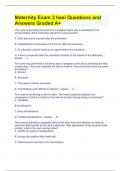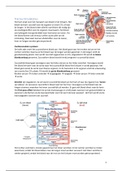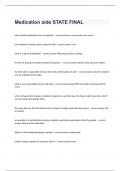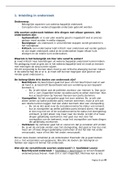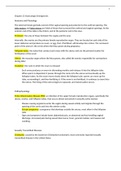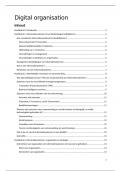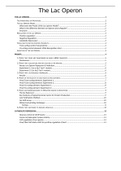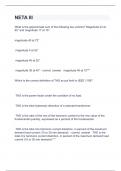1. INTRODUCTION
Digital organization
= A digital organization implements information systems
1.1 INFORMATION TECHNOLOGIES
• Enterprise Applications (ERP, CRM, SCM)
• E-commerce and M-commerce
• Knowledge Management Systems (KMS)
• Emerging digital solutions (Artificial Intelligence, Cloud, Augmented & Virtual Reality)
• Business Intelligence and Analytics
• Cybersecurity
It’s very expensive to implement technologies. Many companies are using
excel. The reality is that when the ERP systems are implemented, many
people still use excel and that’s a waste of money.
Technology is only one piece of the puzzle
• Digitizing organizations is an architectural exercise with following building blocks:
o Technology
o Organization
o Management
▪ You have implemented the system, but the true value is in the insights you
can get from it. we hope that this technologie will help the management to
take better decisions and do their jobs better.
▪ It’s also up to the management what technology they need and how and
what they will invest.
• Implementing information systems and technology alone does not deliver a competitive
advantage
So now we can add more to the definition of digital organization:
→ A digital organization implements information systems to realize its strategic objectives in order
to achieve a competitive advantage
1.2 strategies for a competitive advantage
1
, 1. Lowest cost
o F.ex.: Ryanair, Colruyt,..
o They want to keep their price very low to attract people
Ryanair for example uses an app where you can do whatever you
want: book flights, cars, change flights,..
→ They do this because than they don’t need people to pay people
to change flights etc. & so they can offer low prices
2. Differentiated product
o F.ex.: Tesla
Tesla started building electrical cars and you can choose only 5 colors and with other
companies you can choose every color.
3. Market niche
o F.ex.: Brauzz → offers laundry sheets that contain the same volume as those bottles.
Parts of the market that don’t want to have the standard products, but special
products like for example people who run marathons want more products with
proteins.
Here companies make specific products for that group of the market. F.ex: Alpro &
Brauzz
4. Customer and supplier intimacy
o You want your customers to stay and please them f.ex: coca cola, apple, Netflix →
they hope that you have a subscription and keep it for the rest of your life. They do
this by getting to know you and avoid that you don’t like series. They are collecting
data on you behavior and invest in AI algoritmes to get to know you.
SUMMARY: there are 4 strategies for a competitive advantage:
- Lowest cost
- Differentiated product
- Market niche
- Customer & supplier intimacy
2
, 1.3 role of information systems
• Supporting the current course
o F.ex.: Ryanair
• Driver for fundamental change of the current course or the current business model
o F.ex.: Netflix → it was founded as a dvd rental company. They sent you every month
fysical dvds to your house = was the business model at the beginning of netflix. Then
they where dealing with logistics. In 2010 a new trend occured and decided to use
technologies to do something different and stream these dvds online. This is different
from Ryanair because it wasn’t always the plan of Netflix .
= for existing companies
• Source of new companies and industries = for new companies
F.ex.: Cambio → It’s an app to rent a car, you can see
where there is a car available etc. and wasn’t
possible without tehnology. Cambio didn’t exist
before there was the technology, people decided to
build the app around the technology.
Technology doesn’t only has an impact on the
company but also on other aspects such as car
dealers, carwash,.. (In this example)
New industries and business models
• Banks & bank clerks?
• Translators?
• Cashiers & stores?
• Truck drivers & driving schools?
• Owning a car?
• Professors?
→ These technologies doesn’t onyle change the companies but the entire society
EXAMPLE:
3
,Kodak is a manufacturer for cameras. If you had a camera and wanted your pictures printed, the
paper was very expensive so the company was doing very well. They also had tapes with 20 photos,
so they were selling a lot of tapes, and were succesfull. Kodak missed the digital transformation and
in 2012 they were bankrupt.
On the lookout for:
• Technological innovation
• Competitors
• Customers
• Society
• Government
Now we can adapt the definition of digital organization again:
= A digital organization implements information systems to realize its strategic objectives in order to
achieve a competitive advantage in a rapidly changing environment
→ The environment where the customers are living in is changing so fast, so companies etc. need to
deal with it all te time.
SO THE
DEFINITION OF DIGITAL ORGANIZATION
= A digital organization implements information systems
4
,to realize its strategic objectives in order to achieve a competitive advantage and create stakeholder
value in a rapidly changing environment.
5
, CHAPTER 1: INFORMATION SYSTEMS IN GLOBAL BUSINESS
TODAY
Learning objectives:
1. How are information systems transforming business, and why are they so essential for
running and managing a business today?
2. What is an information system? How does it work? What are its management, organization,
and technology components? Why are complementary assets essential for ensuring that
information systems provide genuine value for organizations?
1. Industrial revolutions
→ We will talk about the effects of the revolutions and can help us to predict the future.
• Before the first industrial revolution this is how
people lived
• There was a lot of agriculture, people make their
own clothes, etc.
1.1 first industrial revolution (1784-1870)
• Steam power, mechanization, weaving loom
o The invention of steam power allowed to use machines. In one big room there was a
steam engine that was connected with a central line to the machines
• Factories with machines
• Urbanization
o People started to move to the factories
• Increase in productivity
6

